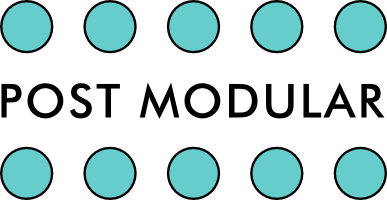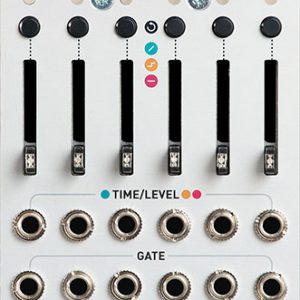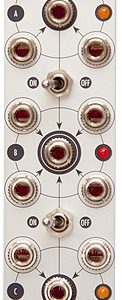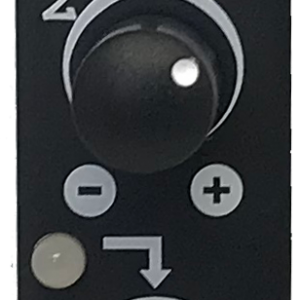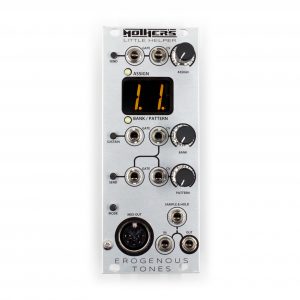O’Tool Plus
£299.00
Out of stock
Description
The O’Tool Plus from Dave Jones Design is an oscilloscope and set of visual audio tools. It is an improved version of the original O’Tool module.
It includes:
– Single channel oscilloscope
– Dual channel oscilloscope
– 3D oscilloscope
– X/Y display
– Level meter
– VU meter
– Peak meter
– Voltmeter (with p-p and average DC)
– Linear spectrum analyzer
– Log spectrum analyzer
– Spectrogram
– BPM meter
– Metromome
It includes user configurable settings and can remember
settings at power up for three users. That means you can
have different settings for home, studio, and performances,
or any three different sets of settings.
It is temperature stable and extremely accurate. It can
monitor two signals, with inputs looped through to other
modules. The scope modes include an external trigger option.
It is firmware upgradable. It has a jumper for internal
or external 5 volt source. It has an expansion connector
for possible future add-on modules.
Power requirements:
80ma +12v
22ma -12v
-or-
12ma +12v
70ma +5v
22ma -12v
Width: 8HP
Depth: 40mm
Original O’Tool description below:
It’s an oscilloscope, but it’s also a lot of other things. The Jones O’Tool is a single and dual trace oscilloscope, a levels meter, a VU meter, a Peak meter, a spectrum analyzer, an X-Y graph display, a frequency meter, a tuner, and a voltmeter.
There are three oscilloscope modes, with single trace, dual trace layered (input 1 is red, input 2 is green, on top of each other), and dual trace stacked (above and below each other). The timebase is adjustable from 100 microseconds to 5 seconds per division. The voltage scale can be set to +/-10v DC, +/-5v DC, +/-10v AC, 0-10v DC, or 0-5v DC. It can trigger on input 1, input 2, or on an external trigger. And there are two trigger levels for the external trigger. Or it can be set to have no trigger, so both waveforms free-run.
The levels mode is a visual indicator of the scale and bias of the signals going in. It is good for seeing changes in a signal at a glance without the full detail of the scope trace, but much easier to spot with a quick glance.
The VU and Peak meters follow industry standard specs for scale and response. The 0dBvu level can be selected between +4dBu (audio line level), +/-2.5v or +/-5v. There is a thin line drawn across between the meters to help see the 0dBvu level at a glance.
The spectrum analyzer has two forms. In the linear mode there are thin lines representing the frequencies, linearly spaced, and with a linear vertical scale. In the Log mode the frequencies are grouped into 6 wide bands representing octaves, and the vertical scale is in db.
The X-Y display mode uses the two inputs to draw points or lines on the screen. It has adjustable sampling times. In the shorter (faster) sampling speeds the inputs are sampled for a period of time and then drawn on the screen at once. In the longer (slower) sampling times the points are drawn on the screen as they happen and the oldest point is erased at the same time. This creates a sort of a snake-like drawing on the screen that can show very long periods of time (up to 200 seconds). Very useful for comparing slow LFOs or related voltages created by some modules.
The frequency meter has two parts. A numerical readout of the frequency, and a guitar tuner style of tuner. The tuner shows the note, the number of cents the note is off, and a sliding bar with a dot representing +50 to -50 cents. It can be used to monitor input 1, input 2, or both inputs. When used for both, the two sliding bars are above and below each other making it easier to align two frequencies. The tuner can be set for 440 or 432 scales.
The voltmeter mode is a simple DC voltmeter that monitors both inputs. It can be used to adjust two DC (constant) voltages to match or be a specific amount apart.
Width: 8HP
Depth: 40mm (1.57 inches)
Power: 130ma of +12, 10ma of -12
Display: 45mm diagonal (1.77 inches) color TFT LCD with anti-static protective window
